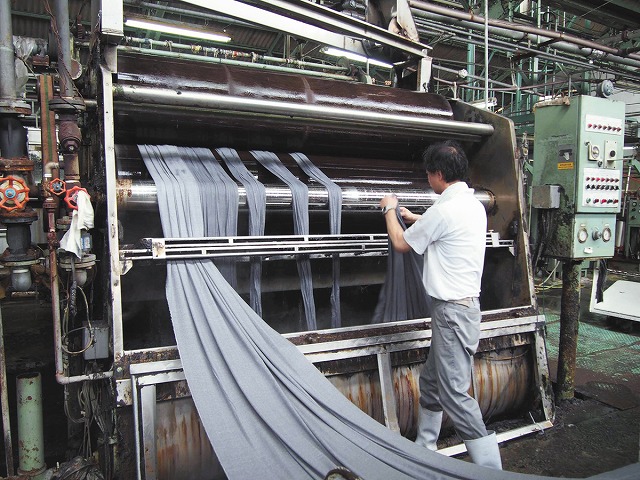Japanese textiles enjoy high repute in all fashion markets around the world, spanning collection brands to sports apparel and native costumes in the Middle East. Their popularity even opened the doors of the Milano Unica, an Italian material fair that has never accepted exhibitors outside Europe, to Japan last year. The depreciating yen has also helped to improve the export environment, and Japanese textiles are enjoying their day in the spotlight. Here, we look into the five reasons why Japanese textiles are so well-loved by people across the world.
1.Differentiated materials with a focus on synthetic fibre
Opening up the fashion market with synthetic fibre / TORAY INDUSTRIES, INC.
 Today, Japanese synthetic fibre manufacturers can even produce items like the airbags used in cars and aeroplane fuselages, based on clothing fibre. They have created numerous cutting-edge materials ahead of the times, and provided support for creativity in fashion.
Today, Japanese synthetic fibre manufacturers can even produce items like the airbags used in cars and aeroplane fuselages, based on clothing fibre. They have created numerous cutting-edge materials ahead of the times, and provided support for creativity in fashion.
Although we tend to associate synthetic fibre with highly functional materials used in sportswear, the strength of Japanese synthetic fibre lies in their outstanding sensibility. TORAY INDUSTRIES, INC. stands at the forefront of the industry, and with the beauty and value of its products absolutely second to none.
Sacalona, a nylon fabric which the company launched this year, has expanded the possibilities of nylon, which previously was a fabric strongly associated with casual wear, sportswear, and innerwear.
Salacona retains the original comfortable texture and moisture absorbency unique to nylon, while offering improved sweat absorption and quick drying performance, a smooth texture, and an elegant look with reduced gloss. Its applications in fashion apparel are expanding quickly.
2.Combination of advanced materials
Expanding the possibilities of fusing different materials / UNITIKA TRADING CO., LTD.
By applying advanced processing and weaving technology for original yarn, UNITIKA TRADING CO., LTD. has eliminated the problems inherent to differences in material properties, and expanded the possibilities of expression for yarn and textiles.
Although more than 40 years have passed since its launch, UNITIKA TRADING’s “PALPA” is a material that has continually evolved ever since. The company is the pioneer in creating this core yarn that has multiple layers and different fibres for its core-in-sheath.
Starting from its staple product that uses polyester staple fibre in the core and cotton in the sheath, and which is equipped with the functionality of polyester and gentle texture of cotton, the company has also recently developed a yarn with polyester staple fibre in the core and odour-eliminating cotton in the sheath.
Armed with advanced fundamental technology, UNITIKA TRADING produces a wide variety of materials by combining different materials and changing the ratio of each component used.
3.Dyeing and organisation processing
Applying artisanal skills to industrial production / Bishu manufacturing region
The Bishu manufacturing region is one of the leading regions in the world for woollen materials. The raising process is one that determines the “face” of woollen fabric, and is carried out by skilled artisans known as masters of raised fabric.
Many factors can impact the finish of raised fabric. These include the characteristics of the raw material, washing conditions, humidity, and temperature. The masters of raised fabric keep watch by the machinery and repeat the various processes of washing the fabric with water, boiling it with hot water, raising the fabric, and drying it.
After as many as 20 to 30 processes, they create the drape and expression of the fabric.
Although the raising process is said to be dependent on the experience and instincts of the artisans, manufacturers in Bishu have succeeded in achieving stable mass production. Their strength also lies in their ability to respond flexibly to demands for unique drapes and composite materials.
Pages: 1 2



